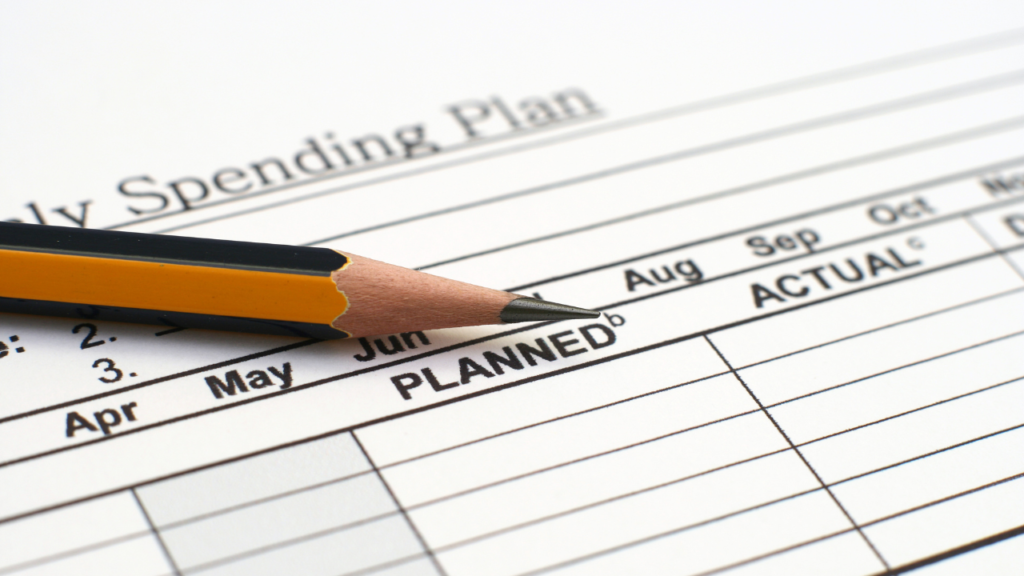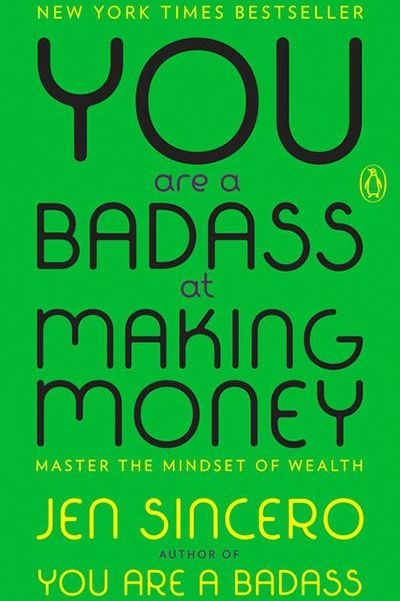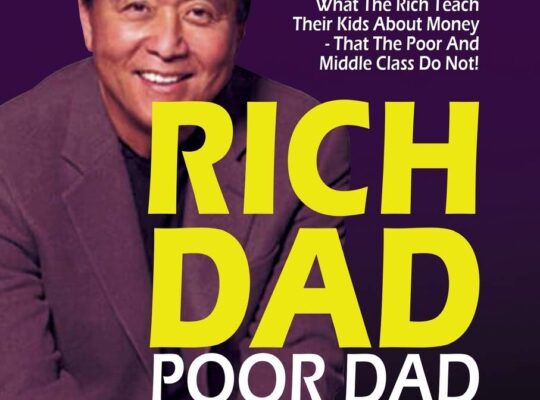‘Your Money or Your Life’ is a book written by authors Vicki Robin and Joe Dominguez. This book displays is a nine-step approach to regaining control of your money so that you may live your life rather than merely make a living. You’ll discover how to change your attitude about money and time, get out of debt, start saving, and eventually achieve Financial Independence.

The author Vicki Robin is a writer and speaker from the United States and she has given several lectures and been on hundreds of radio and television programs. Joe Dominguez worked as a Wall Street financial analyst before retiring at the age of 31 with an estimated $70,000 nest fund in 1969. He lived off the interest income for the remainder of his life, earning roughly $6,000 each year, and was a living example of the concept of frugality that he has advised in this book as well.
What the book teaches us – Achieve Financial Independence and retire early:
The majority of us unknowingly put our finances above our lives. We’re trapped in a loop of making income from our employment in order to purchase items, while sacrificing our actual values.
This book tries to help you change your relationship with money. That relationship extends beyond your earnings, expenditures, debts, and savings. It also covers the amount of time these components use in your life. You’ll learn about the route to Financial Freedom, which is the capacity to choose how to spend your time without depending on paid work. You will gain a clear view of your financial past, free yourself from pre-existing financial behavior, and build new financial habits that will fade away your debt and allow you to retire early if you want so.
Accept your financial past:
To get control of your finances, you must first accept your financial past. That is why, in order to improve your connection with money and achieve Financial Independence, you must first reconcile your financial history by evaluating your income and estimating your net worth.
To start, add up all of your total income during your lifespan. This sum should contain everything from your first salary to your most recent income or inflow of funds into your account.
If you are unsure where to begin, you may utilize information like old bank accounts or even employment offer letters to help you remember your previous income. Make sure to account for any unreported profits, such as presents from family and friends, monetary rewards, or any other type of compensation earned. (I agree that this process can be a bit cumbersome, but the author says that this hardship of finding out your life’s total earnings is worth it).
After you’ve estimated your lifetime earnings, the next step is to figure out how much money you have currently, which is your net worth.

Prepare a personal balance sheet that captures your assets and liabilities for this process in estimating your net worth. This should be a fairly straight forward one. Anything that may be changed into cash is considered a liquid asset (or also called as current asset in corporate terms). This includes money in savings accounts, equities and bonds at current market value, and even cash or coins in your wallet. Your tangible assets include everything you own, including important things such as your vehicle and home. Next, total your liabilities, which include any debts, loans, or unpaid payments. To calculate your net worth, deduct your total liabilities from the total value of your assets.
Now calculate your net hourly income:
As we all know, time is our most valuable resource. So when you go to work, you are exchanging your time for a payment. To rephrase it in another way, when you spend money, you are effectively exchanging your life energy. So, the second step that the author mentions in this book is to determine your net hourly income and to keep track of your money. To establish this, we must first assess the real amount of effort and money spent on sustaining your employment. For example, if you work 40 hours a week and make Rs. 40,000 per month, it means you would earn Rs. 250 per hour (40,000 divided by 4 weeks in a month = Rs. 10,000 per week, divided by 40 hours = Rs. 250 per hour).
The author goes on to say that you should also measure any modifications in time being spent, such as the time it takes to travel to work and its associated expenses, such as commuting cost, money spent on buying outside food when you are too busy to cook, leisure costs to unwind after work, and so on.
Deduct your costs from your weekly income to arrive at your net hourly income (Ideally this figure should be in positive. If its negative, then you are in real financial trouble, and you need to fix it immediately).
You’ll have a better understanding of how much life energy you’re expending if you know your net hourly income.
To fully know your spending patterns, begin keeping track of every bit of money that enters and exits your life (it can be money entering and exiting your bank account, or the cash coming in and going out of your hand). By being conscious of your spending patterns, you may make spending choices based on actual expenses rather than what you believe you spend.
Create monthly report of income and spending – which is nothing but a Budget:
Now that you’ve gathered data on your financial history and net hourly income, it’s time to figure out how you spend your funds. The third step is to prepare a monthly income and expenditure report.

Make subcategories to track your expenditure on items such as meal, housing, commute, and recreation. After you’ve itemized your expenditure categories, generate a monthly computation that includes your subdivisions.
List your income as well, with separate entries for any salaries, incentives, dividends, or other income. After categorizing your monthly purchases, deduct your total expenditure from your total income to calculate your monthly savings.
(This is my tip – This budgeting process you can do it in any free budgeting mobile app, or in an excel sheet, or even in a diary. I have been using a Google sheets to do my budgeting calculations and it has been very much helpful in maintaining this record.)
Now, back into the topic, divide the amount you spend on every given expenditure subcategory by your real hourly income established in step two to find out how much of your life energy each subcategory costs. Assume you pay Rs. 1500 on an OTT subscription that you seldom use, and your net hourly income is Rs. 250. The realization that you invested six hours of your life energy to make the purchase may cause you to think twice the next time you subscribe to these OTT networks that you rarely watch.
(You may think what is meant by “life energy”, that the author repeats frequently – This is nothing but the time, in monetary terms, that you spend for each category of expense that you make.)
Analyze the money spent in sub-categories:
The author suggests to analyze your expenditure by asking oneself three basic questions:
- Did I gain fulfilment in proportion to the number of life energy spent?
- Is this expenditure in line with my objectives and aspirations for the future?
- How would this expense differ if I didn’t have to work for my living?
In addressing these questions, you may discover that you were so satisfied with your spending in certain subcategories that you would now think of raising your expenditure of life energy. If this is the case, add a plus sign to the subcategory. Mark a minus sign for the expense category where you had little to no fulfilment. Mark the expense as zero if it feels balanced. Similarly, be honest in evaluating the expense which you think was not relevant to your life and did not had a fulfillment in doing so, but you still did it. Mark this a minus (By the way, you should bear in mind that you should not put minus sign for the taxes that you pay such as house tax, income tax, water tax, road tax, etc., stating that you did not have fulfillment in expending for these, as these are the duties of the citizens).
By realistically assessing your expenditures, you may discover that certain costs correspond with your life goals and beliefs, while others do not. Mark each subcategory with a plus, minus, or zero to indicate your opinion.
Consider how your spending might vary if you were financially independent and did not need to work. In many circumstances, you may discover that you are spending a lot more than you would otherwise.
Track your progress:
The most crucial strategy for ensuring sustained progress toward your financial objectives is to keep a track of your success. The next stage is to monitor your progress using a graph of your income and spending, as suggested by the author. Display this graph on your room wall to keep track of your monthly earnings and spending, so that you can have a view of it frequently and can be accessible easily. Money is represented by the vertical axis, while time is represented by the horizontal axis in months. Use two distinct colors to monitor your monthly spending and earnings at the conclusion of each month. After that, link the points to the prior month’s entry. You’ll be able to detect patterns and monitor your progression towards your financial objectives over time.
Minimize spending:
Frugality is defined by the author as “enjoying what you have” . So, the author’s sixth step in this book is to intentionally limit your monthly expenditure.
There are several methods for reducing your expenses. The most apparent is to refrain from shopping. You won’t be lured to make impulse purchases if you don’t go inside stores. Develop the practice of purchasing only what you require. However, cutting your expenditure does not require you to become a penny pincher. Instead of purchasing the cheapest item available, consider purchasing a more resilient item.
Increase your income:
The author highlights the seventh step in improving your connection with money and attaining Financial Independence, which is ‘to cherish your life energy by growing your income’.

Society encourages us to think that in order to be fully productive citizens, we must work 40 hours every week. But, in reality, the primary reason for working is to get paid. Community, development opportunities, and acknowledgment may all be obtained outside of regular work. So it is up to us to select how we will employ our life energy.
We must ask ourselves whether the life energy we are now putting into our jobs is a good exchange for what we are earning in return as a pay. In certain circumstances, boosting your income may require you to work additional hours in the short term. However, in the long run, you should strive for a stable financial future.
Earn income from your investments:
Unlike your employment income, your monthly investment income is the earnings you generate from your invested capital. This includes any money that you did not have to labor for, such as interest income, dividends, rental income, or business profits. However, the author cautions that before you begin investing, ensure that you have enough cash in the bank to cover six months of costs as emergency reserve. When you have at least six months of liquid cash in your bank account, you may start the eighth step stated in this book, which is – ‘investing and tracking your additional savings’.
The authors define the monthly investment income as, “Monthly Income = Capital x Current long-term interest rate/12 months”.
Now, the author suggests adding a new line to the wall chart graph discussed above. This is to measure the result of this investment’s monthly income, in addition to the ones monitoring your spending and income. Keep in mind that the vertical axis in the graph reflects your money and the horizontal axis represents time.
When your passive income from investments matches your costs, you have reached the breakeven point. When you attain this point, you have almost achieved financial independence. When you first start out, your monthly investment income may seem little. However, as your income and spending grow more stable, you’ll be able to forecast how much money you’ll need to achieve Financial Freedom. Most people will reach this threshold when their savings equal 25 times their yearly costs. If your yearly costs are Rs. 5 lakhs, you’ll need Rs. 1.25 Crore in assets to achieve Financial Independence.

Manage your money using safe investment options:
Now that you’ve calculated your crossover point and the reality of reaching Financial Independence has become tangible, you’ll need to equip yourself to make your own investment decisions. The author recommends avoiding paying needless fees to middlemen such as financial advisors, brokers, and salesmen who would attempt to influence your investment decisions, while receiving a hefty commission.
You must educate yourself and invest your money in such a way that your income is entirely secure, adequate to cover your fundamental necessities for life. Investing in government bonds was formerly seen to be a secure investment refuge with high interest rates. However, interest rates have fallen since those olden days.
Many investment gurus nowadays recommend investing in low-cost index funds. Index funds are ETFs (exchange-traded funds). These are mutual funds that invest in indexes of the stock or bond markets. Index funds are a passive technique that diversifies your assets over a broad array of stock markets, rather than outperforming the market or selecting and choosing which equities to invest in. They have the least amount of risk and the lowest costs, making them an excellent choice for anybody seeking financial independence.
In any event, before commencing on an investing route, it’s critical to understand about all of your options.
Conclusion:
The conclude this book summary – Begin your journey to Financial Freedom by examining your financial history as well as your present financial status, which is your net worth. Understanding that the money you make from your job correlates to your life energy is the first step in changing your interaction with money. Reduce your expenditures, improve your income, establish an emergency fund, and invest your extra money in safer investment alternatives to retire early and meet your financial objectives.





